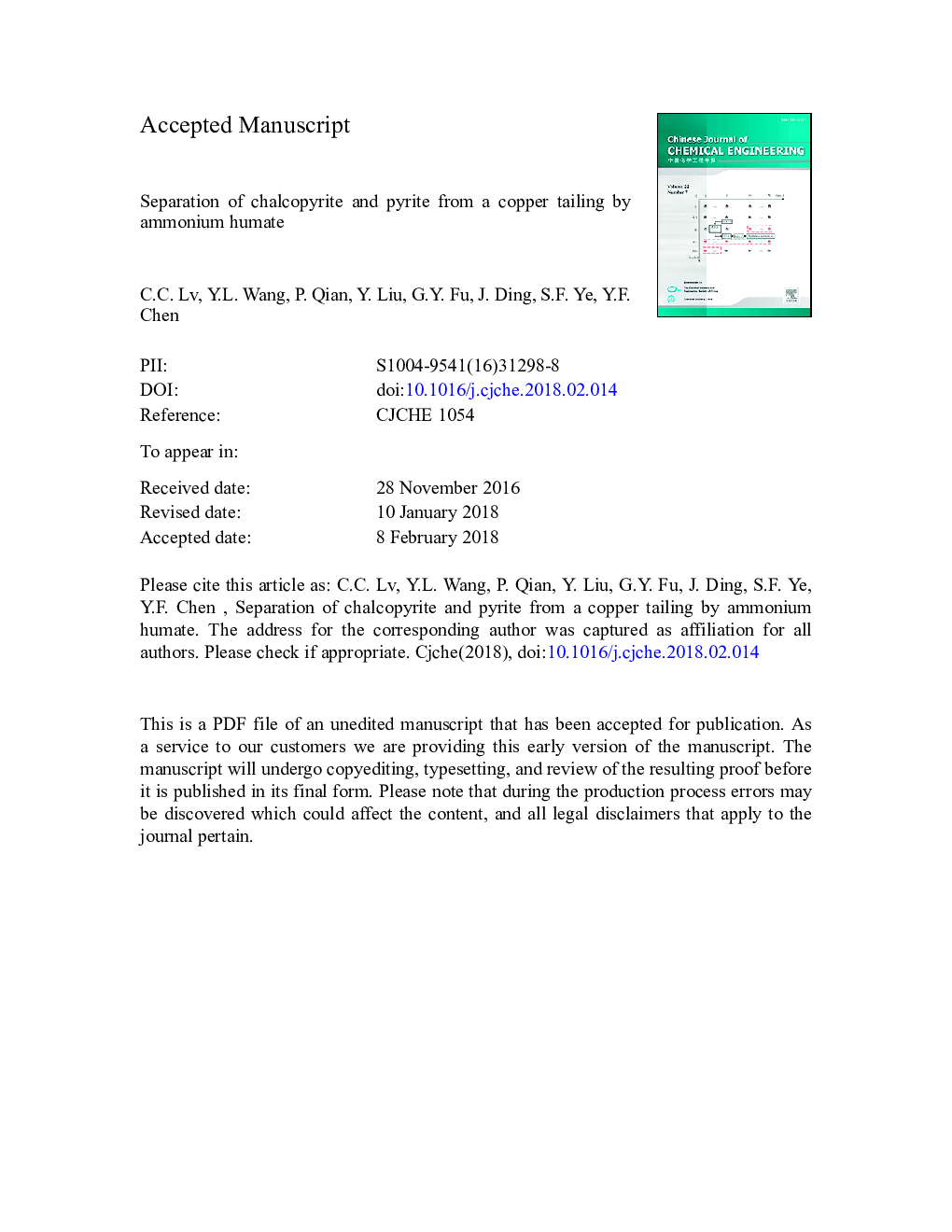| Article ID | Journal | Published Year | Pages | File Type |
|---|---|---|---|---|
| 11021425 | Chinese Journal of Chemical Engineering | 2018 | 21 Pages |
Abstract
Copper tailings constitute a large proportion of mine wastes. Some of the copper tailings can be recycled to recover valuable minerals. In this paper, a copper tailing was studied through the chemical analysis method, X-ray diffraction and scanning electron microscope-energy dispersive spectrum. It turned out that chalcopyrite (Cu) and pyrite (S) were the main recoverable minerals in the tailing. In order to separate chalcopyrite from pyrite in low pulp pH, ammonium humate (AH) was singled out as the effective regulator. The depression mechanism of AH on the flotation of pyrite was proved by FTIR spectrum and XPS spectrum, demonstrating that there was a chemical adsorption between AH and pyrite. By Response Surface Methodology (RSM), the interaction between AH, pulp pH and iso-butyl ethionine (Z200) was discussed. It was illustrated that the optimal dosage of AH was 1678 g·tâ 1 involving both the recovery of Cu and S. The point prediction by RSM and the closed-circuit flotation displayed that the qualified Cu concentrate and S concentrate could be obtained from the copper tailing. The study indicated that AH was a promising pyrite depressor in the low pulp pH from copper tailings.
Related Topics
Physical Sciences and Engineering
Chemical Engineering
Chemical Engineering (General)
Authors
Cuicui Lü, Yongliang Wang, Peng Qian, Ya Liu, Guoyan Fu, Jian Ding, Shufeng Ye, Yuanfa Chen,
